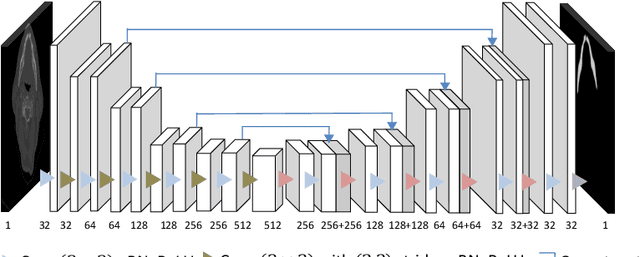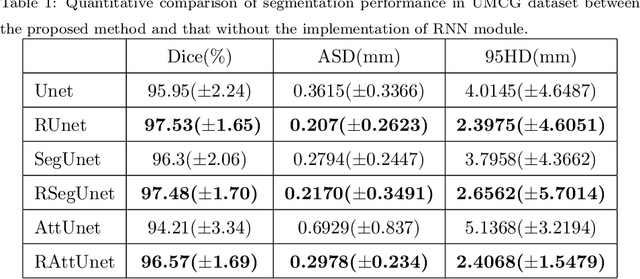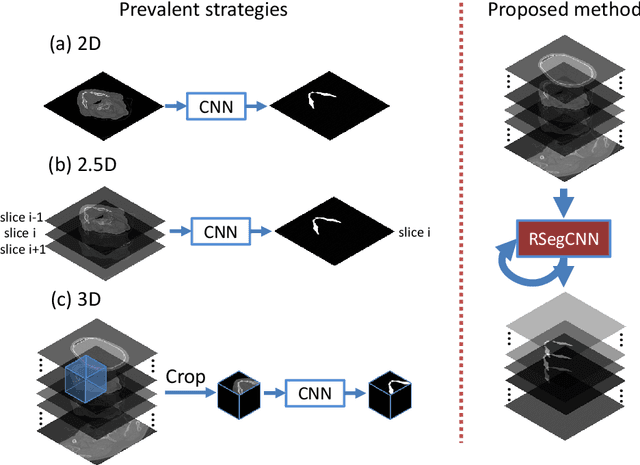Peter M. A. van Ooijen
Masked conditional variational autoencoders for chromosome straightening
Jun 25, 2023Abstract:Karyotyping is of importance for detecting chromosomal aberrations in human disease. However, chromosomes easily appear curved in microscopic images, which prevents cytogeneticists from analyzing chromosome types. To address this issue, we propose a framework for chromosome straightening, which comprises a preliminary processing algorithm and a generative model called masked conditional variational autoencoders (MC-VAE). The processing method utilizes patch rearrangement to address the difficulty in erasing low degrees of curvature, providing reasonable preliminary results for the MC-VAE. The MC-VAE further straightens the results by leveraging chromosome patches conditioned on their curvatures to learn the mapping between banding patterns and conditions. During model training, we apply a masking strategy with a high masking ratio to train the MC-VAE with eliminated redundancy. This yields a non-trivial reconstruction task, allowing the model to effectively preserve chromosome banding patterns and structure details in the reconstructed results. Extensive experiments on three public datasets with two stain styles show that our framework surpasses the performance of state-of-the-art methods in retaining banding patterns and structure details. Compared to using real-world bent chromosomes, the use of high-quality straightened chromosomes generated by our proposed method can improve the performance of various deep learning models for chromosome classification by a large margin. Such a straightening approach has the potential to be combined with other karyotyping systems to assist cytogeneticists in chromosome analysis.
Recurrent convolutional neural networks for mandible segmentation from computed tomography
Mar 13, 2020



Abstract:Recently, accurate mandible segmentation in CT scans based on deep learning methods has attracted much attention. However, there still exist two major challenges, namely, metal artifacts among mandibles and large variations in shape or size among individuals. To address these two challenges, we propose a recurrent segmentation convolutional neural network (RSegCNN) that embeds segmentation convolutional neural network (SegCNN) into the recurrent neural network (RNN) for robust and accurate segmentation of the mandible. Such a design of the system takes into account the similarity and continuity of the mandible shapes captured in adjacent image slices in CT scans. The RSegCNN infers the mandible information based on the recurrent structure with the embedded encoder-decoder segmentation (SegCNN) components. The recurrent structure guides the system to exploit relevant and important information from adjacent slices, while the SegCNN component focuses on the mandible shapes from a single CT slice. We conducted extensive experiments to evaluate the proposed RSegCNN on two head and neck CT datasets. The experimental results show that the RSegCNN is significantly better than the state-of-the-art models for accurate mandible segmentation.
Efficient convolutional neural networks for multi-planar lung nodule detection: improvement on small nodule identification
Jan 13, 2020



Abstract:We propose a multi-planar pulmonary nodule detection system using convolutional neural networks. The 2-D convolutional neural network model, U-net++, was trained by axial, coronal, and sagittal slices for the candidate detection task. All possible nodule candidates from the three different planes are combined. For false positive reduction, we apply 3-D multi-scale dense convolutional neural networks to efficiently remove false positive candidates. We use the public LIDC-IDRI dataset which includes 888 CT scans with 1186 nodules annotated by four radiologists. After ten-fold cross-validation, our proposed system achieves a sensitivity of 95.3% with 0.5 false positive/scan and a sensitivity of 96.2% with 1.0 false positive/scan. Although it is difficult to detect small nodules (i.e. nodules with a diameter < 6 mm), our designed CAD system reaches a sensitivity of 93.8% (94.6%) of these small nodules at an overall false positive rate of 0.5 (1.0) false positives/scan. At the nodule candidate detection stage, the proposed system detected 98.1% of nodules after merging the predictions from all three planes. Using only the 1 mm axial slices resulted in the detection of 91.1% of nodules, which is better than that of utilizing solely the coronal or sagittal slices. The results show that a multi-planar method is capable to detect more nodules compared to using a single plane. Our approach achieves state-of-the-art performance on this dataset, which demonstrates the effectiveness and efficiency of our developed CAD system for lung nodule detection.
Automatic Pulmonary Nodule Detection in CT Scans Using Convolutional Neural Networks Based on Maximum Intensity Projection
Apr 11, 2019



Abstract:Accurate pulmonary nodule detection in computed tomography scans is a crucial step in lung cancer screening. Computer-aided detection (CAD) systems are not routinely used by radiologists for pulmonary nodules detection in clinical practice despite their potential benefits. Maximum intensity projection (MIP) images improve the detection of pulmonary nodules in radiological evaluation with computed tomography (CT) scans. In this work, we aim to explore the feasibility of utilizing MIP images to improve the effectiveness of automatic detection of lung nodules by convolutional neural networks (CNNs). We propose a CNN based approach that takes MIP images of different slab thicknesses (5 mm, 10 mm, 15 mm) and 1mm plain multiplanar reconstruction (MPR) images as input. Such an approach augments the 2-D CT slice images with more representative spatial information that helps in the discriminating nodules from vessels through their morphologies. We use the public available LUNA16 set collected from seven academic centers to train and test our approach. Our proposed method achieves a sensitivity of 91.13% with 1 false positive per scan and a sensitivity of 94.13% with 4 false positives per scan for lung nodule detection in this dataset. Using the thick MIP images helps the detection of small pulmonary nodules (3mm-10mm) and acquires fewer false positives. Experimental results show that applying MIP images can increase the sensitivity and lower the number of false positive, which demonstrates the effectiveness and significance of the proposed maximum intensity projection based CNN framework for automatic pulmonary nodule detection in CT scans. Index Terms: Computer-aided detection (CAD), convolutional neural networks (CNNs), computed tomography scans, maximum intensity projection (MIP), pulmonary nodule detection
 Add to Chrome
Add to Chrome Add to Firefox
Add to Firefox Add to Edge
Add to Edge